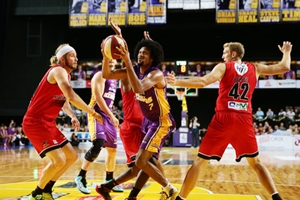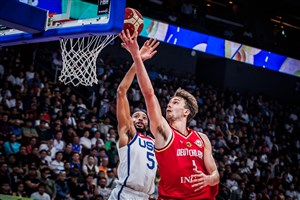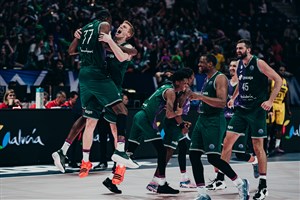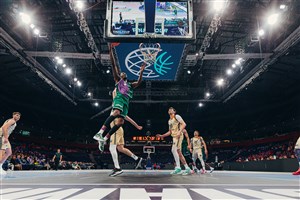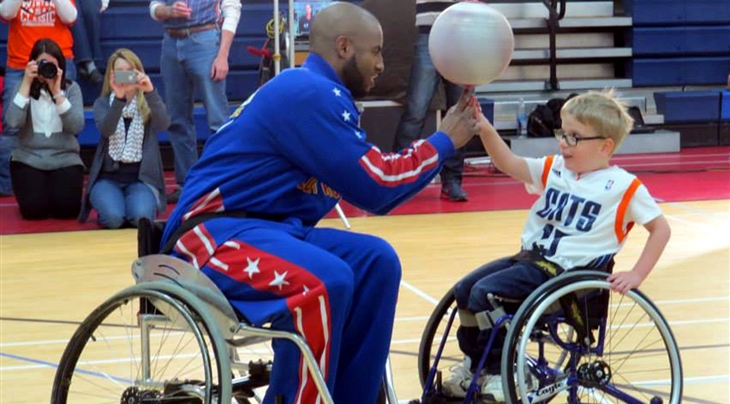
The Harlem Globetrotters keep on rolling
CHARLOTTE (Steve Goldberg's Wheel World) - Before a game in the Golden State Warriors's home arena and another in San Jose this weekend, a pair of Harlem Globetrotters players hit the Bay Area, stopping in to an Oakland middle school to play wheelchair basketball with some kids.
When I was growing up, in a far less oversaturated media environment, the Globetrotters, a team founded, in contradiction to its name, in Chicago in 1927, were unquestionably the most famous team in basketball, in any sport for that matter. A staple of the pioneering ABC Wide World of Sports, they were one of the first teams to gain a truly national audience. Playing thousands of games in over 120 countries, they were arguably the most famous team in the world.
In a game that was mostly played in black and white, the Globetrotters were a splash of Technicolor, playing above the rim, in and with the audience, and to the camera. Their trick-shot artists integrated H-O-R-S-E into the full court game with long distance hooks, drop kicks, and bounce shots that all seemed to go in.
But it's a different world now and while I will never forget the Globetrotter stars of my youth - the dazzling dribblers Fred "Curley" Neal and Marques Haynes, and the clown princes that were Meadowlark Lemon, Hubert "Geese" Ausbie, and Reece "Goose" Tatum - I could not name any of the current crew.
But that doesn't matter much because the Globetrotters have always been a team of the people and the kids in Oakland this past week will never forget their time spent with "Slick" Willie Shaw and "Buckets" Blakes.
In a demonstration game presented by the Center for Independent Living, Shaw and Blakes strapped into competition wheelchairs to play against adults with disabilities and students both with and without them. For players who have done most everything with a basketball, this was new.
"It's my first time doing something like this," said Shaw, a New York native who played for St John's University before joining the Globetrotters. He told the local ABC7 TV news: "I know it's difficult because we're able to run and jump. Confined to a wheelchair, you see it from a different view."
Also on hand was former USA Paralympic and NWBA star Trooper Johnson who plays for the Golden State Road Warriors.
Hopefully, the ultra-competitive Johnson took it easier on the two Globetrotters than he did on the equally combative former USA Olympian and WNBA star Dawn Staley when the two of them were paired up for television shoot after the women played an exhibition game prior to the 1996 Atlanta Olympic and Paralympic Games.
What was supposed to be a friendly mix of shoot around and banter became a full-on 1v1 game that only stopped when the bus waiting with the rest of the women’s national team had to go.
The three-point marksman impressed the Globetrotters.
"One of the guys shot from half court and he made it look so easy," Blakes said.
This was far from the first time the Globetrotters mixed with their wheelchair counterparts. They were here in Charlotte last March where Dizzy English took time to hit a Charlotte Rollin' Hornets (then Bobcats) practice where they taped a video that was played during their game on the weekend.
A month later in Toronto, former Canadian Junior Wheelchair Basketball National Team player Shayne Smith teamed with Globetrotter Bull Bullard for a unique alley oop dunk at an exhibition.
They've made appearances in events like these for many years, not just in the U.S. but around the world. In the year before London 2012, Globetrotters Chris 'Handles' Franklin and Cheese Chisholm visited with Team GB players Joe Bestwick and Abdi Jama and local youth players in these photos.
In fact, the Globetrotter link to wheelchair basketball dates back to the late 1950s where Junius Kellogg and four Globetrotter teammates were driving through Arkansas on the way to an exhibition game, when a rear tire blew. The car flipped repreatedly, throwing all of the players out of open windows. All escaped serious injury except for Kellogg, whose spinal cord was damaged.
Never to play again, Kellogg became an influential wheelchair basketball coach. From 1957 to 1966, he led the Pan Am Jets to four international championships in the wheelchair game.
"We love opportunities like this and it's not just about the game of basketball, but it's about the game of life," Blakes told the TV crew.
Johnson added the punctuation, saying: "Your disability doesn't define you. It's what you do with your life that makes you who you are."
Steve Goldberg
FIBA
FIBA's columnists write on a wide range of topics relating to basketball that are of interest to them. The opinions they express are their own and in no way reflect those of FIBA.
FIBA takes no responsibility and gives no guarantees, warranties or representations, implied or otherwise, for the content or accuracy of the content and opinion expressed in the above article.
To help make this column as inclusive as possible, please send any national or international event information, story suggestions, or comments to wheelworldmail@gmail.com.

